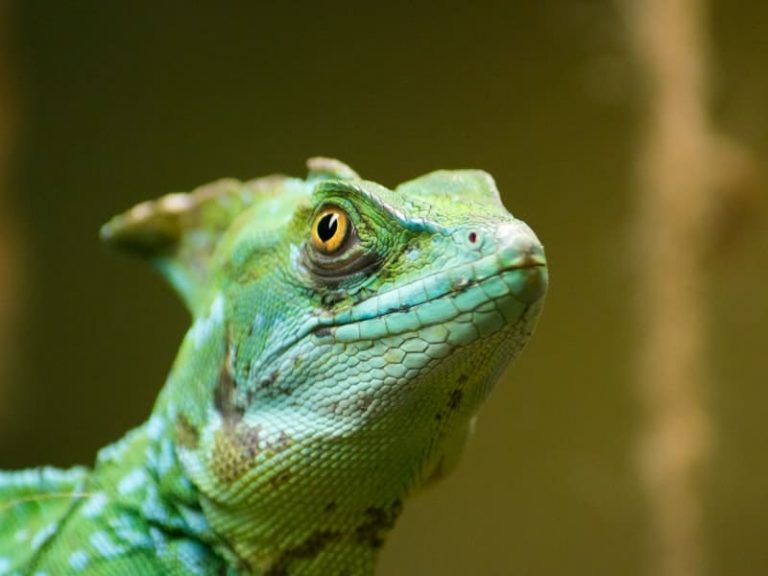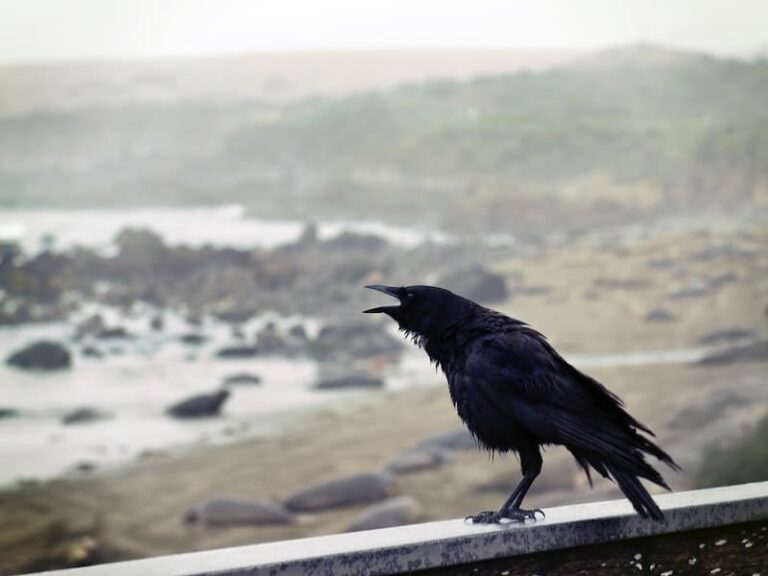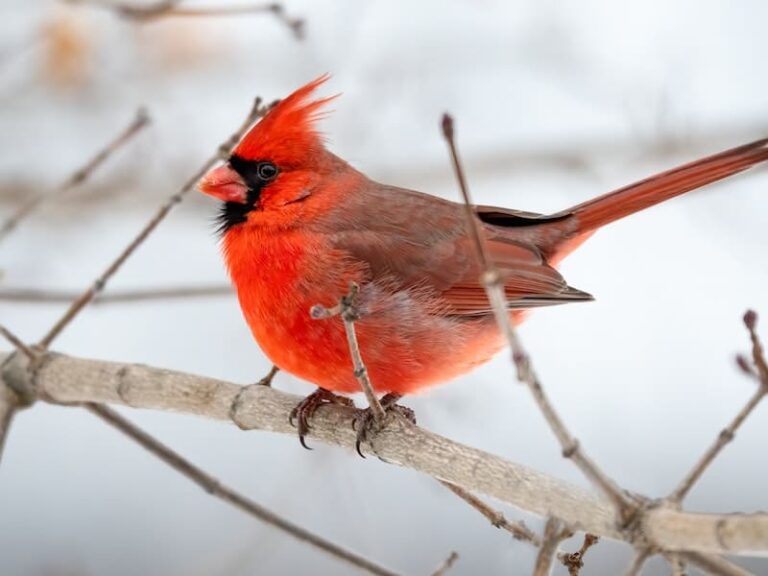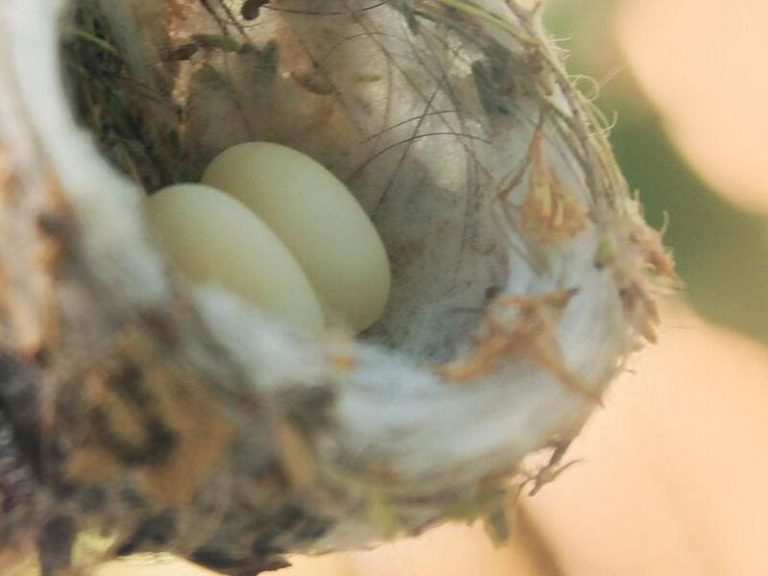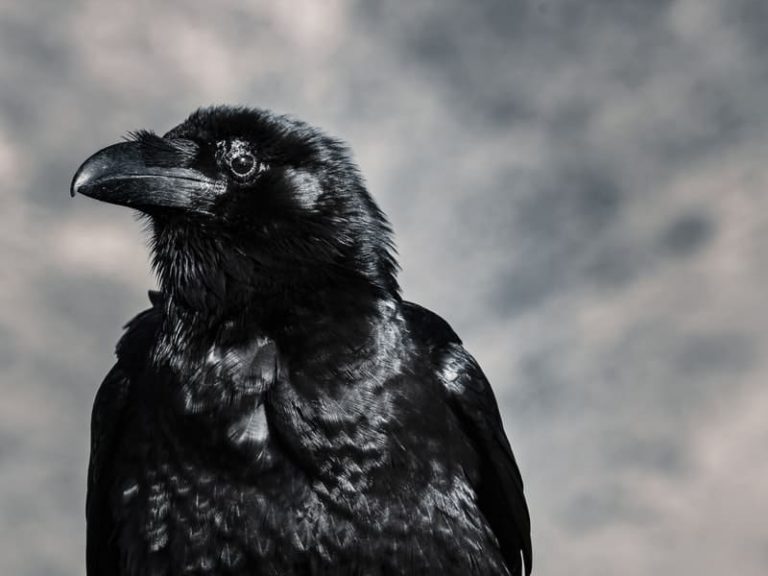Birds That Look Like Mockingbirds
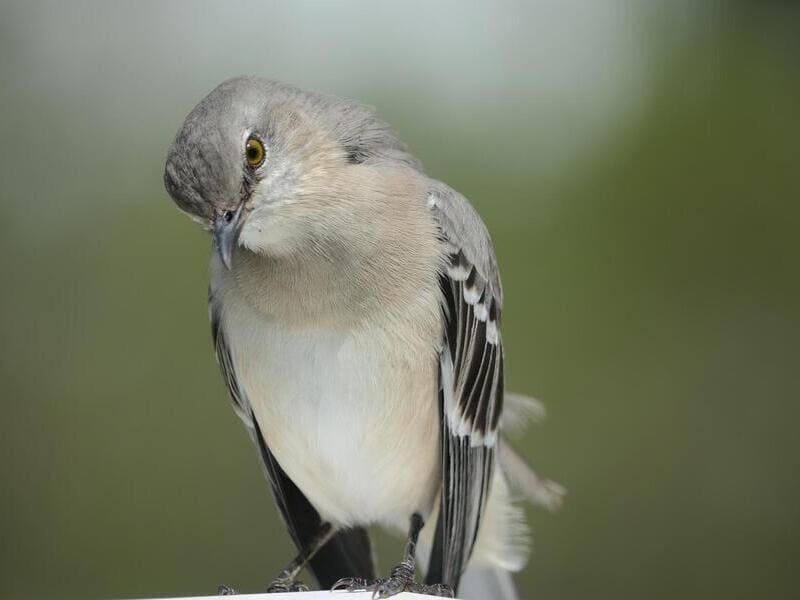
Have you been hearing an endless series of different birds singing outside your house? So chances are they could be a Mockingbird.
These gray-bodied thin birds seem to put all their colors into their personality. They sing almost continuously, even at night. But every melodious sound you hear is not of mockingbirds. Various birds look like mockingbirds.
In this article, we are going to look at different birds that resemble mockingbirds as they belong to the same family. If you have ever been confused about the mockingbirds and other birds that look like mockingbirds then this article will help you to readily differentiate between them.
What Does a Mockingbird Look Like?
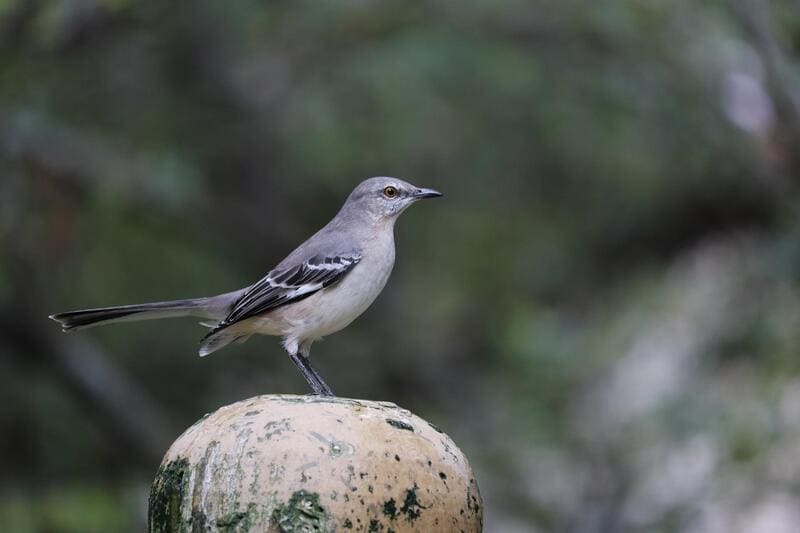
- Length: 8.3-10.2 in (21-26 cm)
- Weight: 1.6-2.0 oz (45-58 g)
- Wingspan: 12.2-13.8 in (31-35 cm)
Mockingbirds are medium-sized passerine birds belonging to the Mimidae family that is native to North America, Central America, and Mexico. It has greyish upper body plumage with pale grey, two long feathers with almost white underparts, and a characteristic striped and spot pattern across its wings.
These birds are well known for their flowing voices and singing in groups. However, at some point, they have voices like imitating other birds or even sounds like machinery or insects, which can be annoying when they nest near human homes.
The majority of the people don’t know the basic difference between different species of birds. The same is the case with mockingbirds. People often confuse it with other birds that look like mockingbirds. They can be distinguished from many other species by their large, pointed wings and tails.
You can easily find mockingbirds year-round in open regions with shrubby vegetation such as fruiting bushes, hedges, and thickets. Other than this, parkland, suburban areas, cultivated land, and second-growth habitat at low elevations are all good sites to look for mockingbirds. They also favor grassy regions over bare patches when pasturing the ground.
What Bird Is Similar to A Mockingbird?
Here is a list of some birds which make people confused in differentiating mockingbirds from other birds. They all have some features that relate them to mockingbirds.
- Northern Shrike
- Blue-Gray Gnatcatcher
- Loggerhead Shrike
- Sage Thrasher
- Gray Catbird
- Townsend’s Solitaire
Northern Shrike
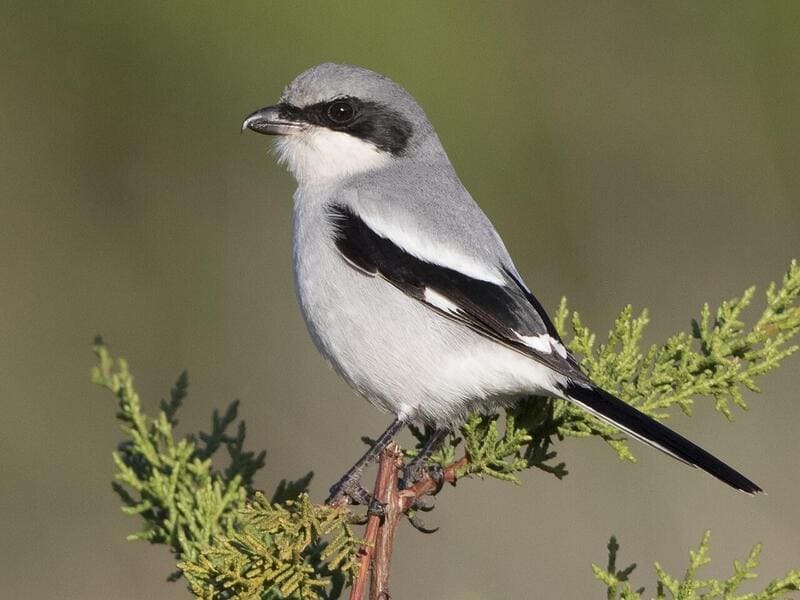
Though Northern Shrike looks like mockingbirds, they have some key differences which distinguish them from mockingbirds. Northern Shrikes have a larger head, a hooked bill, and black wings among other characteristics. Their tail feathers feature white spots on them, which gives them their name.
Also, their backs have dark grey feathers, and their bellies have light grey features which makes them a bit different from mockingbirds.
The majority of their time is spent looking for food in the vegetation or catching insects in flight. Most often Northern Shrikes eat insects like ants, spiders, beetles, and wasps. However, they also eat some other arthropods like centipedes and millipedes.
Moreover, some small vertebrates such as frogs and lizards are also a source of food for them. You can easily find one from Alaska to Mexico, and from Panama to Central America.
Blue-Gray Gnatcatcher
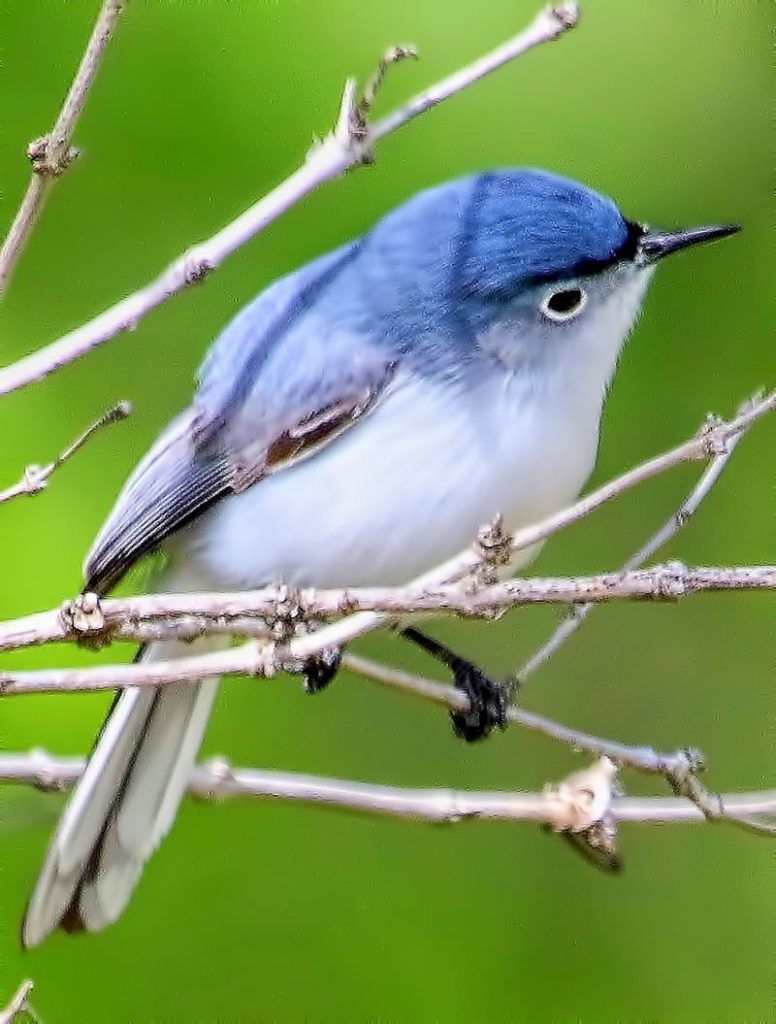
A little bird that dwells in North America is the blue-gray gnatcatcher. It is one of the most common birds in eastern and central America, but you can also find one as far as Southern California.
Blue-gray Gnatcatcher is a tiny, long-tailed bird that resembles mockingbirds. They are smaller in size, having light blue-gray upper parts, a black tail with white borders, and grayish-white underparts.
They have long, thin bills that they utilize to grab flying insects. Foraging for insects and spiders, it slides and jumps through dense outer vegetation. They flutter its white-edged tail from side to side as it goes, startling insects and chasing them down.
They are noted for their territorial character, and when nesting or grazing on food sources, they do not mix with other kinds of birds. They eat moths, beetles, butterflies, ants, flies, bees, and spiders among other insects. Fruit, such as figs or berries, is also a favorite of these adorable young birds.
Loggerhead Shrike
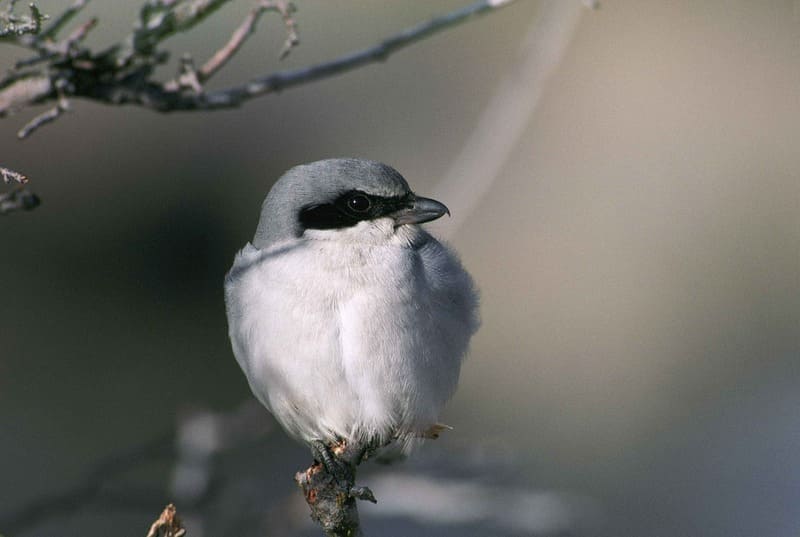
Loggerhead Shrike is another bird that looks like mockingbirds. It is a North American songbird. They are found as far as Alaska and all over the continent. You can also find them in orchards, on farms, and in ancient fields in the Eastern United States.
The Loggerhead Shrike is a small grey bird with a black mask and black wings with white flashes, and white underparts. Their tail is black with white corners. Their wings form a little “handkerchief” when the wings are closed due to black and white patches.
For grabbing prey, they feature black masks, hooked bills, a black tail, and muscular feet. Because of their similar color patterns and habitat preferences, mockingbirds and loggerhead shrikes are sometimes confused; nevertheless, mockingbirds have much smaller heads and distinct beaks.
Loggerhead Shrike has a unique manner of replicating the songs of other birds by generating sounds with its vocal box while putting its head back. They can also replicate the sound of mockingbirds, as well as redwings, hermit thrushes, brown thrashers, and other birds.
Sage Thrasher
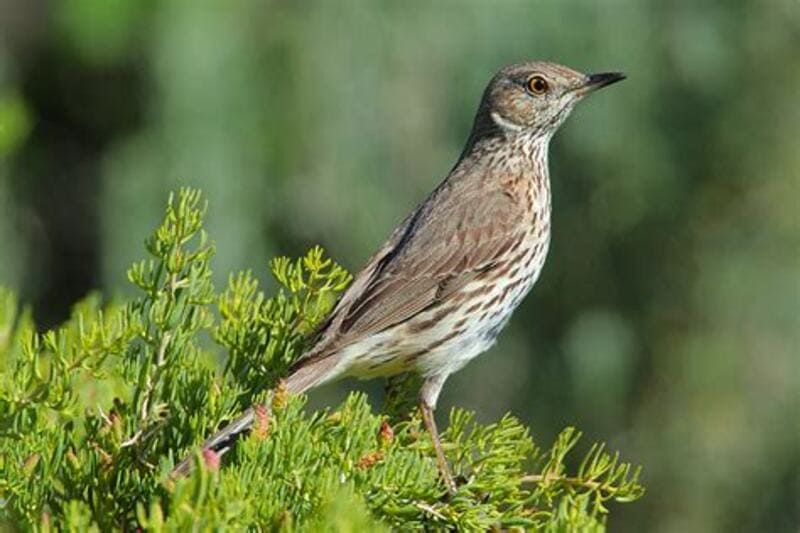
Sage thrashers are medium-sized songbirds with legs and long tails. They have greyish-brown upperparts and pale underparts. They have crimson orange-tinged flanks and tiny streaks on the breast. They are easily found in Mexico, the United States, South America, and Central America.
Sage thrasher is a desert or semiarid-dwelling bird that forages for insects during the day and roosts near ground level at night. The bill of a thrasher is significantly shorter and straighter than that of other thrashers.
It is frequently mistaken for a mockingbird; it has distinguishing markings on its breast and bottom that distinguish it from other birds.
It is frequently mistaken for a mockingbird, but it has distinguishing markings on its breast and bottom that distinguish it from other birds. One way to distinguish them is by their size, as they are slightly larger with a shorter tail and bill.
Sage Thrashers can be found in sagebrush swaths with scattered bare ground and bunchgrasses. They use a wider range of open, desert habitats during winter and migration, including grasslands with scattered shrubs.
Gray Catbird
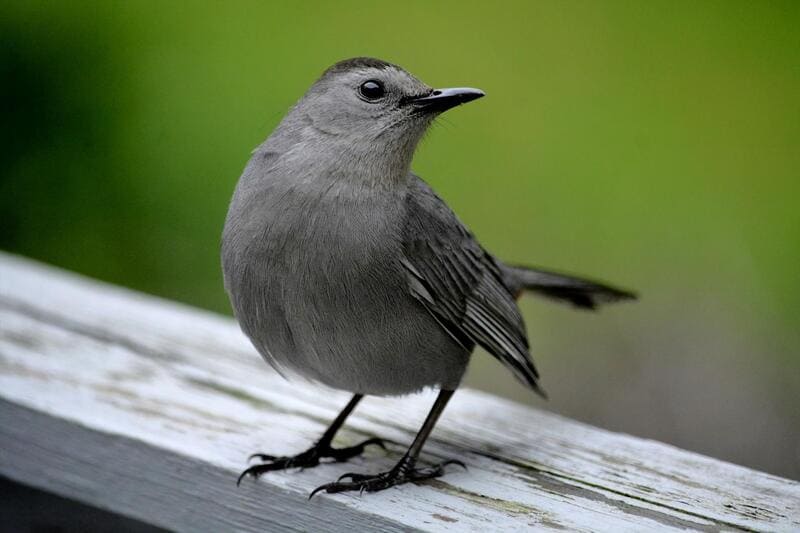
Northern mockingbirds have a paler colored belly than Gray Catbirds. They also have two white wing bars, which Gray Catbirds lack. The native habitat of the Gray Catbird is gardens, woodlands, and orchards, whereas the natural habitat of the Northern Mockingbird is open regions near farmland or woodland.
Their diets are similar; they both consume largely insects such as caterpillars, grasshoppers, and even beetles, however, the Northern Mockingbird can be found foraging for food on trees and bushes.
The Gray Catbird is the official bird of Massachusetts, and they can be found all around New England, but Northern Mockingbirds are more common along North America’s eastern coast.
Townsend’s Solitaire
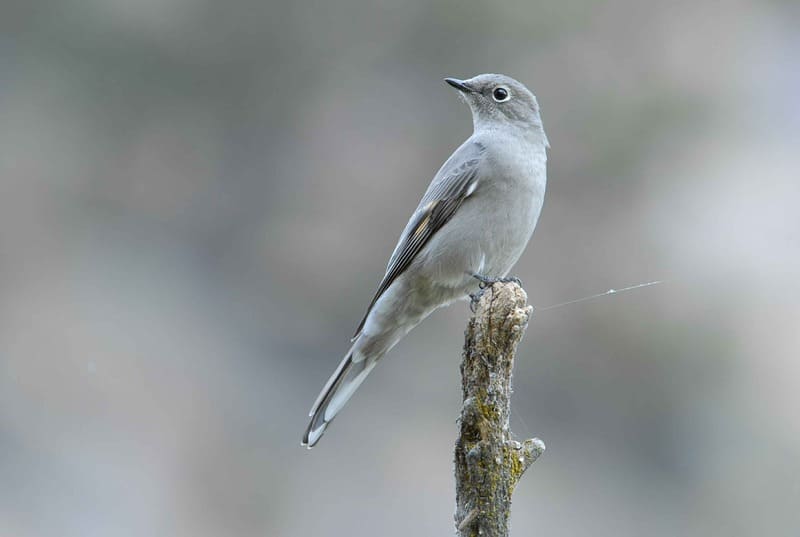
Townsend’s Solitaire is a type of thrush. They have a medium-sized body, a long tail, a short bill, and a small rounded head in comparison to their body size. It has grey underparts and a long tail with white streaks, as well as black wings with a yellow-brown pattern. It has the same shape and color markings as a Mockingbird, but it is smaller. However, their long tail and upright posture give them a thin appearance.
Gray birds with conspicuous white eyes are Townsend’s Solitaires. In flight, their buffy wings and tail feathers stand out giving them an upright position for the flight. Their children are dark grey with white spots and buffs that give them a scaly appearance.
The natural habitat of Townsend’s solitaire can be found all over eastern North America, from Canada to southern New England. When it comes to food sources like juniper berries, Townsend’s Solitaires have been known to travel great distances.
During the winter months, when food supplies are sparse, they eat insects, spiders, and berries, or their preferred juniper ripens, which they can locate when traveling year-round or migrating from one location to another.
Are Nightingales and Mockingbirds Related?
The distinction between a nightingale and a mockingbird is that they two belong to different families. Nightingales is a European songbird and belong to the Muscicapidae family. On the other hand, Mockingbirds are American long-tailed passerine birds belonging to the Mimidae family, famed for their ability to mimic other birds’ voices.
However, they two are not related to each other because of the opposing properties. The nightingale is also known as the reddish passerine bird well recognized for its strong and beautiful singing. Nightingales are now widely known as Muscicapidae, or Old-World Flycatchers. They have delicate grey-white underparts with a grey cast and are mostly brown with some light grey spots. They have light brown wings and tails with no visible markings.
The Mimidae or Mockingbirds are also known as mimic thrushers or mimids. They are a family of passerine birds found in the Western Hemisphere. They belong to the order Passeriformes.
Final Words
Birdwatching has recently gained popularity and the majority of the people are engaged in this activity. While watching birds you can confuse one bird with another. Such as mixing mocking birds with other birds that look like mocking birds.
In this article, we have discussed different species of birds that look like mockingbirds and their distinctive features which will help you to differentiate between them. Hope this helps you out!
Interesting articles:

